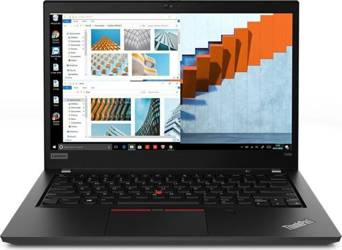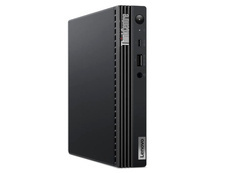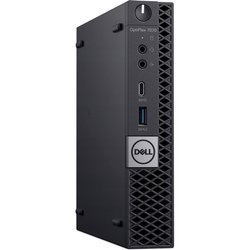WINDOWS 11 - what's new and what are the requirements?
The new Windows operating system was unveiled on October 5, 2021. According to many commentators, this was the technological event of last fall.
Although most of the secrets have already been revealed, we still don't know enough about Microsoft's new product. First of all, it should be noted that a lot has changed and it is worth understanding these changes. What should you know before you start working with the new system? Here are some suggestions.
Windows 11 devices
Windows 11 after the launch
The premiere of Windows 11 took place in an atmosphere of surprise - fortunately, this time it was a pleasant experience. The US giant made the system available in selected locations a little earlier than the official launch day. Currently, the successor to Windows 10 is now available both as a standalone product and as an update for some devices with an installed predecessor.
Basic information about Windows 11
What's worth knowing about Microsoft's new operating system? Its arrival is said to be a response to complaints about Windows 10. The main complaint was that, despite semi-annual updates, there were practically no significant changes.
The new product of the American giant is rich in significant updates and novelties, although they were more to be expected under the previous operating system. However, the company decided that the market had waited long enough, a full six years. Therefore, a new Windows 11 was needed.
What will change with the new system?
Microsoft has not so much focused on completely new developments as it has carried out a major redesign of Windows 10. The US giant has assumed that the popular ''10'' was and is a successful product. It has also changed a lot over the past six years, and this continuity must be largely maintained. However, the visual aspect, which has changed very little over the years, has received a lot of attention.
In fact, one often hears the statement that Windows 11 has more in common in this respect with Windows Vista, which was released years ago, than with its predecessor "10". The task bar has a new look. The Start menu is completely different. The appearance of the icons has also changed. What else will we find in Windows 11? The new functions include:
- The message bar with widgets
- Integration of MS Teams into the system
- New virtual desktop functions
- Improved window handling
- Improved responsiveness of the system
How has the Start menu changed?
What immediately catches the eye is the centering of the icons. This reminds many people of the macOS solution. When you click on the Start icon, a window also opens in the center of the desktop. The absence of the characteristic "tiles" is also appreciated. A "Suggested" section has been added, which uses artificial intelligence to identify the programs that could be useful at the moment.
Android app support
One reason to be pleased in the case of Windows 11 is the possibility of supporting mobile applications. The situation in which we use them on smartphones and tablets, while we can no longer use them on Windows, has not generated enthusiasm. It is therefore not surprising that this improvement in the new version of Microsoft's operating system is particularly appreciated.
Familiar apps with new features
The new operating system also means more or less significant changes to the applications for which Windows is known. The new features include Paint, Media Player, Calculator, the Photos application and Microsoft Teams. Sometimes the changes are mainly cosmetic, but in Paint, for example, a lot of work has been put into a new, much more aesthetically pleasing interface.
Minimum hardware requirements for Windows 11
What specifications does your hardware need to meet the requirements of Windows 11? They must, of course, be higher than those specified for ''10''. After all, seven years have already passed since its market launch. In the world of PC components, that's a very long time. For some components, e.g. the size of the RAM and the hard disk capacity, the requirements are twice or three times as high. The detailed requirements are as follows:
- a 64-bit processor with two cores and a clock speed of 1 GHz
- the processor must be compatible with the SoC (System on a Chip) standard
- at least 4 GB RAM
- 4 GB free hard disk space
- graphics card that is at least compatible with DirectX 12 a display with a resolution of 720p, larger than 9 inches
It should be noted that these are the absolute minimum hardware requirements. Many extensions require even more advanced components. In particular, many options for gamers will require much more powerful hardware. For Windows 11 to be fully functional, a TPM 2.0 module is required, the presence of which means that Microsoft's new product is already rated as the most secure ever.
Who will be able to use Windows 11?
First of all, it is necessary to find out whether our computer can cope with the requirements of Windows 11. The manufacturer has prepared help for those who are less interested in technological innovations. It is enough to download the PC Health Check application from the Microsoft website and check the capabilities of our computer in relation to the requirements of Windows 11 so that the system can be used by everyone.
The use of the system will be possible for:
- Windows 10 owners whose computer meets the hardware requirements to upgrade to Windows 11
- Those who decide to purchase a new system
- People who have purchased devices with Windows 11 pre-installed.
How to install the Windows 11 system? Step-by-step guide
What can you do to successfully install Windows 11? It should be emphasized once again that we have several installation methods to choose from:
1. Installation via Update
The free upgrade option applies to Windows 10 users whose hardware meets the minimum criteria and who are logged into their Microsoft account. The individual steps for updating are quite simple. We start with ''Settings'', go to ''Updates and security'' and then select ''Windows Update''. Click on ''Check for updates'' to indicate that an update is available. Then simply select "Download and install" and restart the computer.
2. Installation via installation media
The method consists of using a tool to create an installation medium (DVD or USB disk) for the system in question. To do this, the Media Creator Tool for Windows 11 must be downloaded from the manufacturer's website. Before the installation medium is created on a DVD or USB stick, the language and version of the system are specified. After copying the files to the selected medium, we can proceed with the actual installation of Windows 11. The advantage of this method is that it has many similarities with the installation mode known from Windows 10 and is therefore very popular.
3. Using the Windows 11 installation wizard
This is the installation method recommended by the manufacturer. We start the application as administrator and confirm the required permissions. After completing the application, we need to restart the device.
How has Windows 11 been received on the market? Although there are some complaints about performance problems, most of the reviews are quite positive. At the moment we have a choice - Windows 10 is still supported, but there will come a time when it will share the fate of Vista or the popular "seven". Then we will have to switch to Windows 11.
Recommended

Lenovo ThinkPad T490 i5-8365U 8GB 240GB SSD 1920x1080 Class A Windows 11 Home

Lenovo ThinkCentre M70q i5-10400T 6x2.0GHz 16GB 256GB SSD WIFI Windows 11 Home
